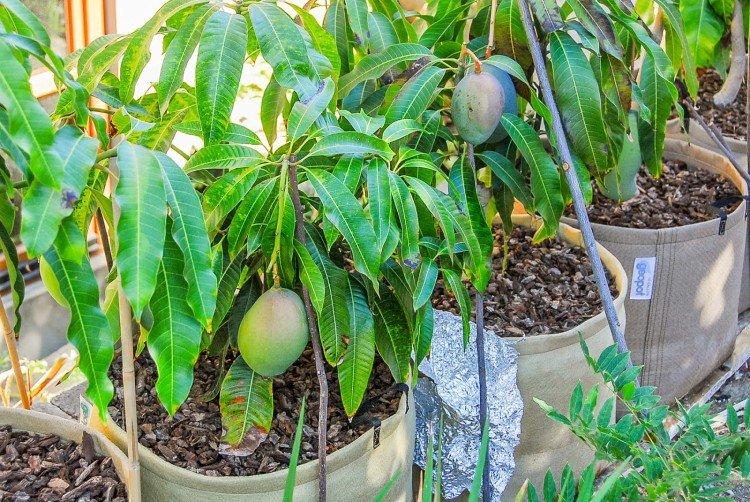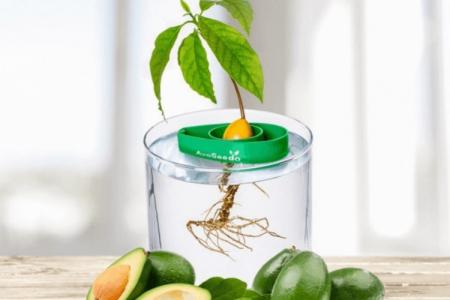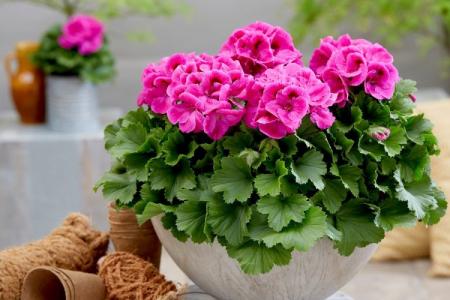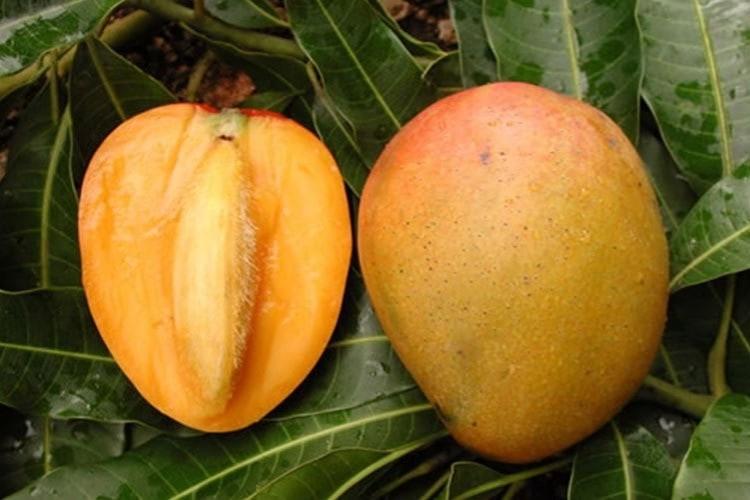
Growing a mango sounds almost like the beginning of a fantasy story. And if we say that this is more than real, and you can cope with it even on your own? And at the same time we will arrange on the shelves how to choose the right bone and how to care for a young tree!
How to choose a mango for planting
Choose a ripe, juicy fruit that should be very aromatic and slightly soft. Do not be guided by color, because different varieties differ significantly. It is better to pay attention to the presence of dark spots - this is a sure sign that you need to take!
Overripe mangoes are also suitable for planting, although they cannot be eaten. To the touch, such a fruit is strongly pressed, it has an unpleasant smell and taste. If ripe fruits are not found in the vicinity, you can buy green and put it to ripen in paper for a couple of days in a dark place.
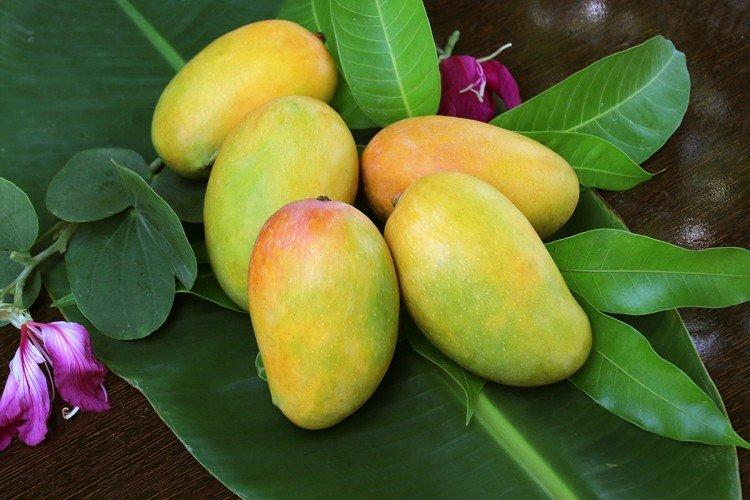
How to get a bone
The mango seed is safely hidden in the shell, which must first be peeled from the pulp. Rinse it well under cool water and look for damage. If there is a crack on the shell, strip it to the end, and if not, carefully cut it with a knife.
Carefully remove the bone from the shell and put it in a solution of potassium permanganate for 7-10 minutes for disinfection. You can use ready-made store-bought fungicides, but follow the instructions on the package strictly. You need to plant a bone right away, otherwise it will dry out in a couple of days and will definitely not rise.
How to germinate a mango seed
It so happens that the mango seed has already begun to sprout right in the shell. Then you are lucky and you won't have to germinate it separately. Otherwise, wrap it in damp gauze or cotton and close it in a food container.
Move the container to a dark, warm place and check the humidity twice a day. Spray the bundle with water daily, but do not unfold. The seed will begin to germinate in 1-2 weeks, and after that it must be immediately transplanted into the ground.
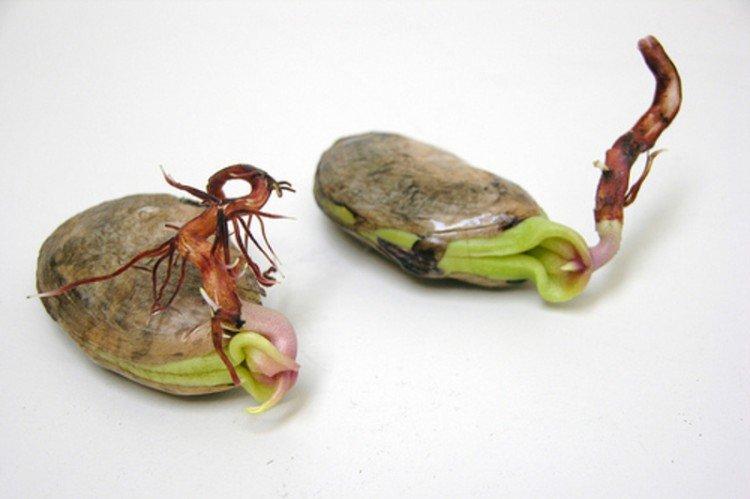
Choosing a flowerpot and ground
You need a medium pot with a diameter of about 10 cm, but always deep. The roots of mangoes grow deeply, so they need space. Do not take the pot "for growth", otherwise the water will stagnate and the roots will start to rot.
Make drainage holes in the flowerpot and fill it by a quarter of the volume with floral expanded clay, gravel or even foam crumbs. For mango, the most common universal soil of neutral acidity is suitable. You can mix peat with coarse sand in a 2 to 1 ratio.
How to plant a mango
Just stick the mango bone with the root vertically three quarters into the ground. If there is a sprout, lay it horizontally, sprinkle it a little with soil and flood it well with water. For the first time, cover the seedling with glass, film or a transparent plastic bottle.
Place the flowerpot on the southern windowsill, the more natural light, the better. Air the seedling briefly every 2-3 days to prevent it from rotting. The shelter can be removed after 2-3 weeks, when the mango is more or less rooted and begins to sprout little by little.
Do not shoot a makeshift greenhouse abruptly, because mangoes need acclimatization. First, make small holes in it or leave gaps. Increase the size of these gaps and the duration of airing every day, and after 3-4 days remove the protection completely.
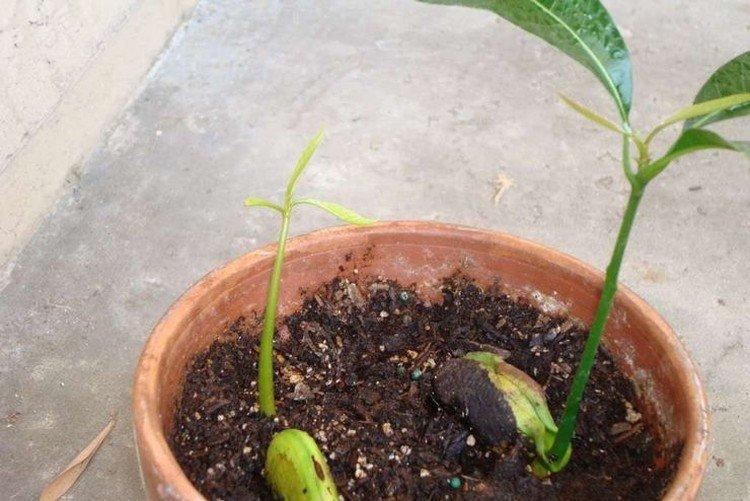
How to grow a mango from a sprout
Growing mangoes from sprouts is much easier, but you will have to buy them too. There are whole nurseries that are engaged in the cultivation of such exotic plants in conditions close to natural. You still need to look for such a nursery, but the sprout is no longer so capricious and much easier to handle!
Mango care at home
Mangoes need to be watered frequently, but not too vigorously so that the ground does not turn into a swamp.The interval between watering is about 2-3 days, but in the summer it will have to be shortened. Monitor the condition of the soil: it is important that the earth clod does not dry out completely.
You don't need to bathe the mango, but wipe the leaves with a clean, damp cloth every week. This way you will control the appearance of diseases or pests so that you can quickly take action. Spray the tree twice a week or place a humidifier next to it.
In the summer, a mango that has grown stronger can be taken out into the street, but only when the threat of frost has definitely passed. A year later, with the onset of summer, slowly fertilize it every 2-3 weeks with complex mixtures.
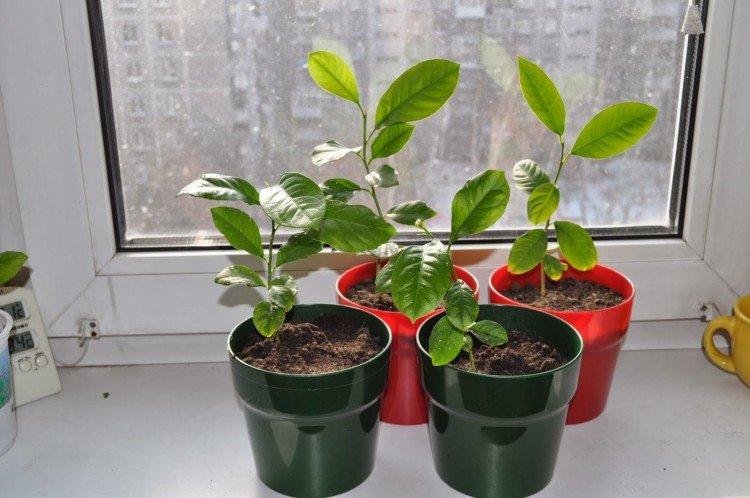
How to transplant and shape mangoes
The six-month-old mango is already strong enough and has grown to be transplanted into a larger pot. You still need good drainage and an equally versatile soil. Gently take out the root system with an earthen ball, transfer to a new pot and add fresh soil to the sides.
In the future, the mango does not require a transplant on a schedule, but make sure that the roots fit in the pot. If they start to peep into the drainage holes or the growth of the tree unexpectedly slows down, it's time to change the flowerpot.
Mango grows quickly and stretches strongly upwards, so it definitely needs formative pruning. To make the mango branch and grow side branches, pinch the tops of the young shoots. If it has already grown more than a meter, do seasonal decorative pruning for the beauty and neatness of the crown.
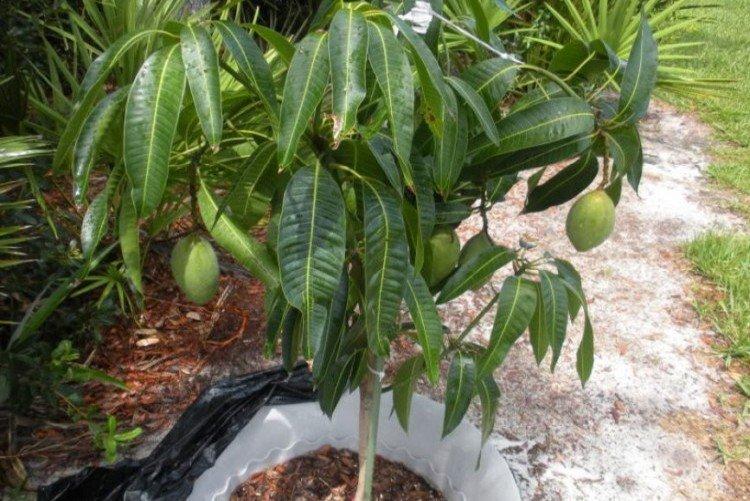
Will the mango bear fruit?
For the first time, a mango will not bloom soon - in 6-10 years. It is very difficult to achieve fruit from it, and for this it must be grafted. This is another plus of buying a sprout in the nursery - all the procedures have already been carried out there.
To inoculate a mango, you need the bud of another tree, which is already bearing fruit. Carefully cut it out with a piece of wood with a sharp, sterile knife so as not to damage it. Make a small T-shaped cut in your mango and fold the bark to the side.
Insert the cut kidney there and secure with soft duct tape. You will take it off later, when the kidney has definitely grown. A couple of years after vaccination, you will be able to admire the first flowering. During this time, feed the mangoes with nitrogen mixtures more often. And in another three months you will see the first harvest!
